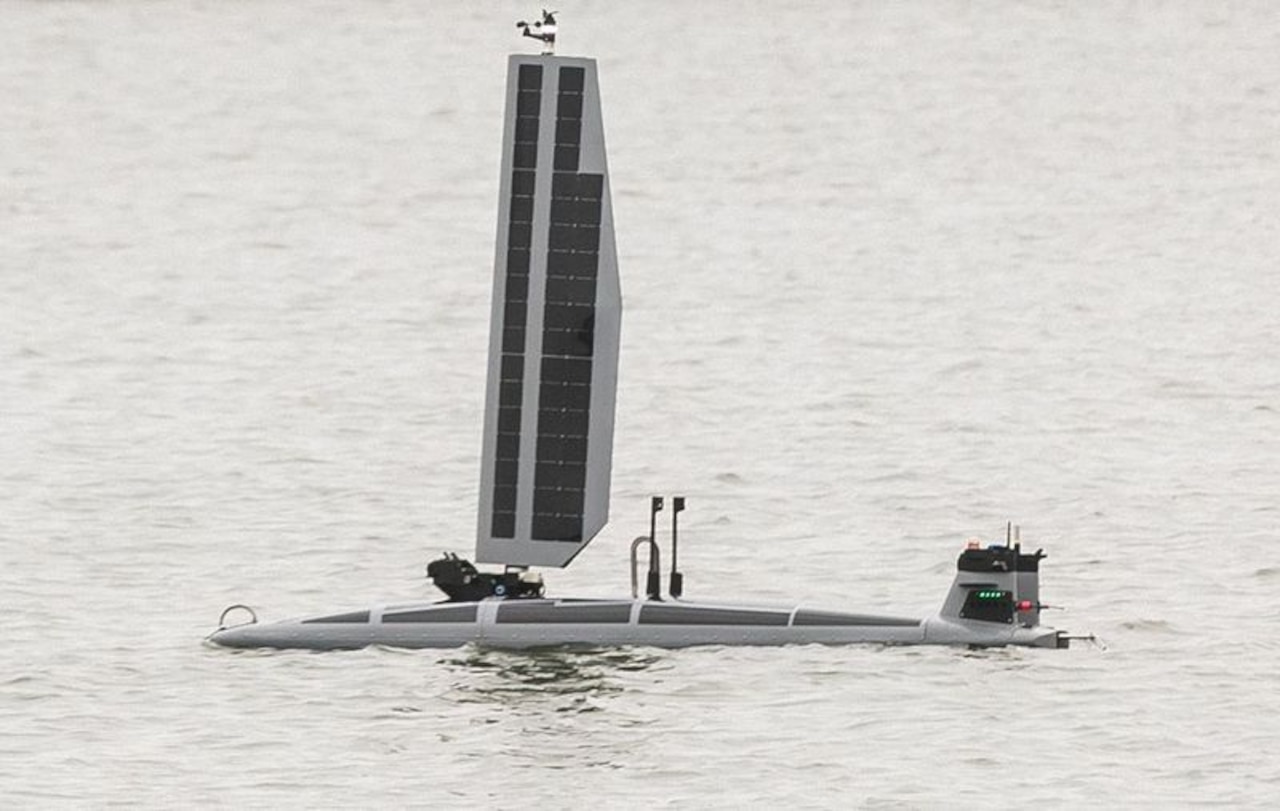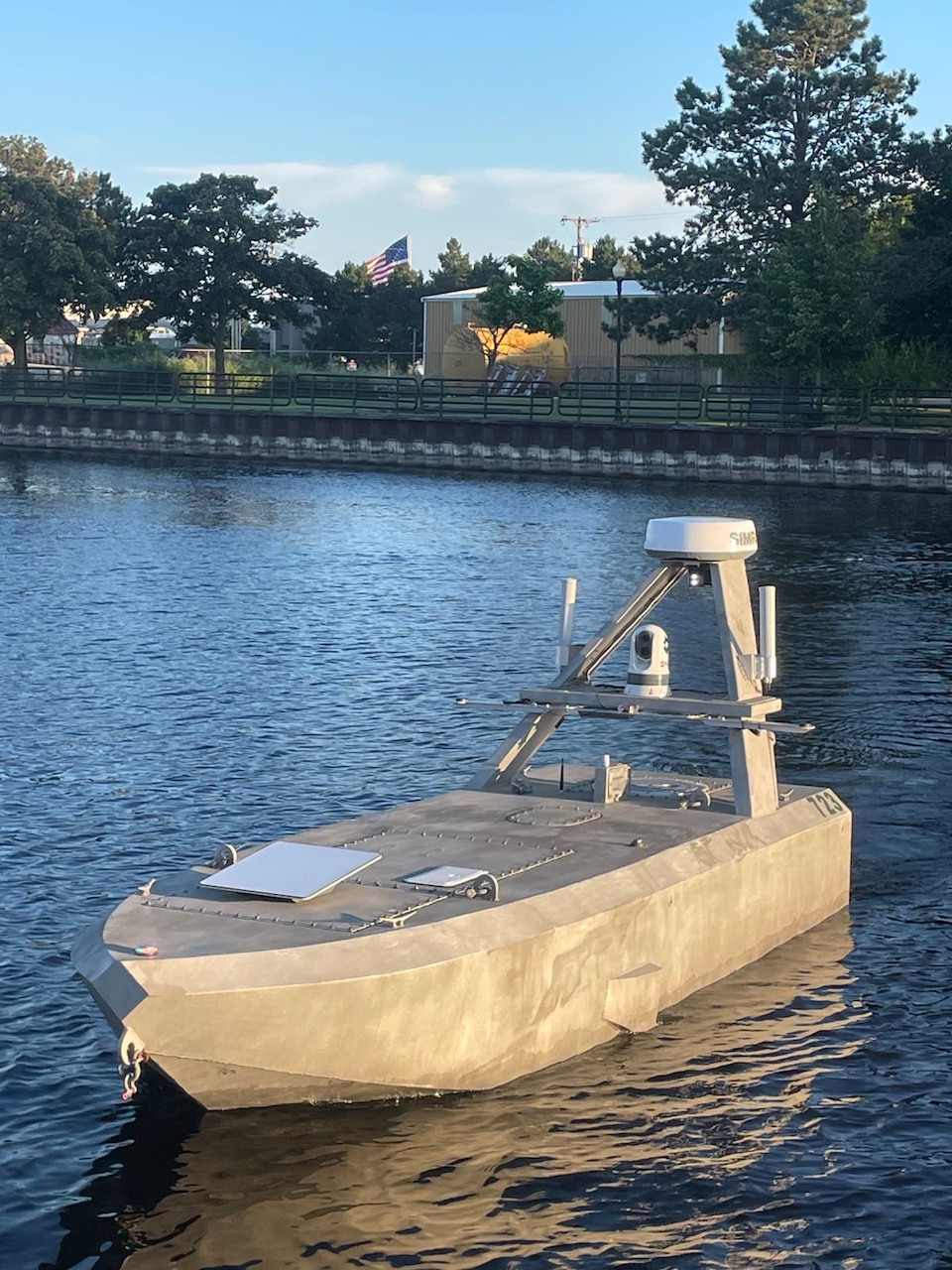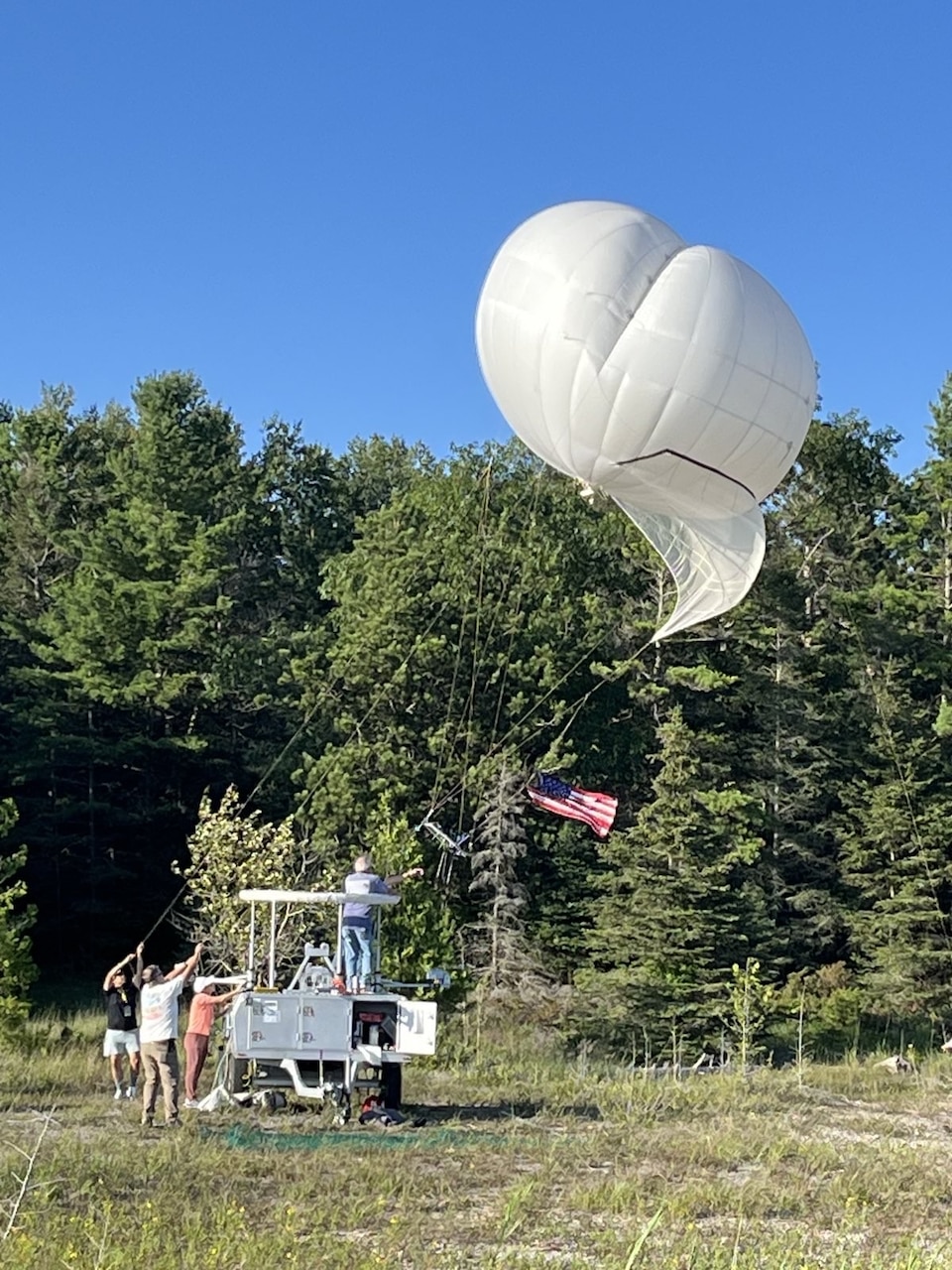The Office of the Under Secretary of Defense for Research & Engineering (OUSD(R&E)) hosted an event to demonstrate next-generation autonomous systems designed to enhance naval operations, improve situational awareness, and bolster defense capabilities in an increasingly complex maritime environment.
The event, hosted by R&E's Prototypes and Experiments Office from 15-19 July, was conducted in support of the AUKUS Advanced Capabilities line-of-effort — known as Pillar II — and featured new and emerging technologies in preparation for future collaboration between the United States, United Kingdom, and Australia.
Next-Generation Autonomy for Small Uncrewed Surface Vessel (sUSV)

Remote Ride
One of the objectives of this event was to test the Autonomy Baseline (ABL), a suite of government owned software that uses the Navy's Unmanned Maritime Autonomy Architecture (UMAA) standard interfaces. Adaptability and ease of integration on multiple vessels proved the capability for future warfighter plug and play behavior integration. The combined government and industry team successfully integrated next-generation ABL software onto sUSV platforms. The rapid integration of ABL technology onto these platforms demonstrated simultaneous command of more than 80 percent of the sUSV platforms tested. This accomplishment advances a capability that could become an effective combat multiplier for maritime forces.
Multi-domain Uncrewed Secure Integrated Communications

Testing Time
R&E personnel also tested solutions that enable seamless communication between autonomous systems, traditional naval assets, and command centers. Tested technologies included Multi-domain Uncrewed Secure Integrated Communications (MUSIC), a software-defined mesh network that uses different communication links simultaneously to orchestrate secure information sharing across platform and sensor nodes. Resilient communications solutions like MUSIC seek to enhance capabilities across domains, improving AUKUS partners' operational efficiency, decision-making speed, and overall mission effectiveness.
Command and Control (C2) Interoperability

Testing Event
Building on several years of groundwork between the three nations to align technologies, standards, and protocols, the MBP event tested the Common Control System (CCS), the U.S. Navy's government-owned operator software for planning and execution of uncrewed system missions. During the event, USV data was transmitted from the platforms through the MUSIC tactical communications network into CCS. From CCS, the data was then shared in real-time with AUKUS partners across the trilaterally developed Interoperability to Interchangeability (I2I) C2 network. The seamless integration of autonomous systems with existing command-and-control structures aims to pave the way for greater coordination and synergy among the three nations' navies.
Opportunities for Cooperative Development

Tethered Balloon
Following last month's testing, the DoD will ship select platforms and technologies to Australia to conduct follow-on experiments under the AUKUS Maritime Big Play initiative. Announced by U.S., U.K., and Australian Defense chiefs in December 2023, Maritime Big Play is a series of integrated trilateral experiments and exercises aimed at enhancing capability development, improving interoperability, and increasing the sophistication and scale of autonomous systems in the maritime domain.
The MBP initiative provides a unique platform for the discovery of opportunities for cooperative development among AUKUS partners. By fostering a spirit of innovation and collaboration, participants are identifying areas where joint research, development, assessment, and experimentation can advance combat capability in the maritime domain.
About OUSD(R&E)
The Office of the Under Secretary of Defense for Research and Engineering (OUSD(R&E)) champions research, science, technology, engineering, and innovation to maintain the United States military's technological superiority. Learn more at http://www.cto.mil or visit on LinkedIn at OUSD(R&E) LinkedIn.






